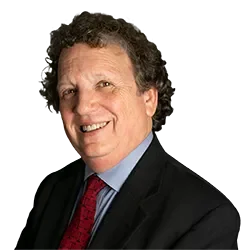ASAP
Employers Have 30 Days to Reach Compliance after I-9 COVID Flexibilities End on July 31, 2023
On May 4, 2023, the Department of Homeland Security (DHS) and Immigration Customs and Enforcement (ICE) announced that employers have 30 days to reach I-9 compliance after COVID-19 flexibilities end on July 31, 2023. Under this announcement, all employees onboarded using remote verification must have in-person physical verification of their identity and employment eligibility documentation used for their Form I-9 by August 30.
Although employers have until August 30, 2023, to complete physical examination of documents, it is important to start this process now. Many employers have hundreds, if not thousands, of employees who were onboarded using the remote, virtual verification. Thus, it is going to take time for these employers to complete the physical reverification.
One of the issues that employers may face is that employees are still working remotely; thus, how can physical reverification be conducted? Immigration law has long held that employers may utilize designated representatives to complete Section 2 of the Form I-9. The designated representative may be an adult family member, friend, notary public (but not one who is being paid to perform this service), or other designated person to act as an agent.1
When the physical reverification is conducted, the designated representative or company official must review the documentation. If the same employer representative reviewed the documents virtually and in person, one should note “COVID-19 Documents - physically examined on (date) by (name)” in the Form I-9, Section 2 “Additional Information” field. However, if the employer representative who virtually verified the documents will not be the same as the person physically examining the Employment Authorization and identification documentation, one needs to complete a new Section 2 of the Form I-9 and attach it to the old Form I-9.
The flexibilities policy began on March 20, 2020, when due to COVID-19 precautions, DHS announced it would exercise discretion for all new hires by deferring the physical presence requirements associated with the Form I-9 pursuant to the Immigration and Nationality Act (INA) where employers and workplaces are operating totally remotely. In these situations, employers could inspect Section 2 documents remotely through a virtual connection (e.g., video link, fax, or email). Then, employers should have entered “COVID-19” as the reason for the physical inspection delay in the Section 2 “Additional Information” field.
In other immigration compliance news, in a meeting with a group of immigration compliance attorneys, officials from the USCIS/E-Verify, Immigration and Employee Rights (IER) Section of the Department of Justice, OCAHO, and Office of Civil Rights and Civil Liberties (CRCL) of DHS discussed recent developments in the field of immigration compliance. Some of the highlights of this meeting are as follows:
- New I-9 form continues to be delayed and will likely not issue until July 2023 or later. The delay appears to be caused by DHS trying to tie the new I-9 form to permanent virtual verification;
- DHS is progressing on Next Gen E-Verify2 and it is anticipated to issue between December 2023 and April 2024. It will provide more empowerment for employees and is an extension of myE-Verify. For now, it will not initially be functional for Web-based E-Verify users; and
- DHS is rolling out a method for workers of investigated employers that have committed various unlawful acts under wage and hour law, the OSH Act, National Labor Relations Act, and other employment laws, to receive Deferred Action. DHS is referring to these employers as “unscrupulous.”3 One crucial step will be for the labor agency (Attorney General, DOL, NLRB, OSHA, etc.) to file a Statement of Interest. With Deferred Action, employees may receive a two-year employment authorization document (EAD) and later may seek a U or T visa.
Employers with questions related to these issues should contact their immigration attorney.
